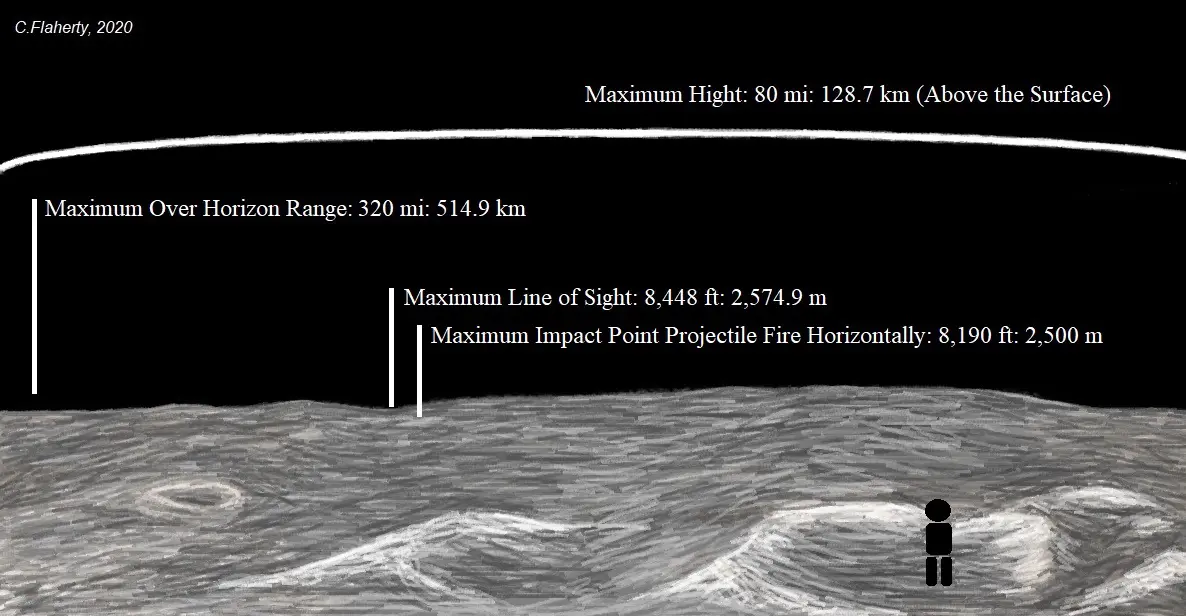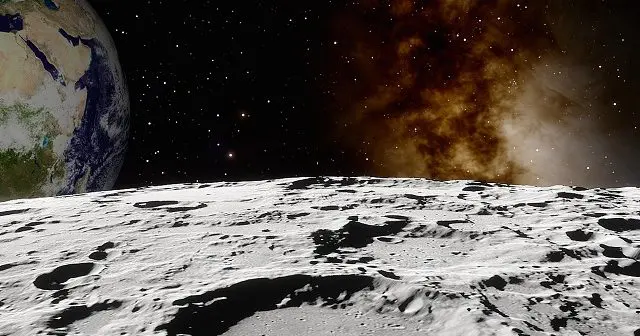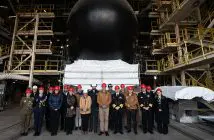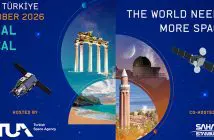
INTRODUCTION
Potential for Lunar surface combat was raised by a U.S. Army proposal to set up a manned permanent Lunar Base (U.S. Army, 1959); and a U.S. Airforce proposal to establish a Lunar Expedition Facility (U.S. Airforce, 1961). A U.S. Army Lunar surface weapons study (U.S. Army, 1965), gave greater definition to the notion of Lunar surface combat, and how this might be conducted. Space exploration technology has vastly developed over the last half-century; however, these early papers enunciated key tactical concepts that remain relevant. The most significant of which was the radical redefinition of the enduring features of terrestrial tactics, than that expected would operate on the Lunar surface. The concept of distance, weapons effect and range, and the use of terrain were all envisaged to radically change. New weapons were envisaged, designed to fit new parameters based on the moon’s surface conditions. Fundamentally, it was also understood, that the approach to combat and its operations on the Lunar surface would change according to a two-stage concept development. An initial phase, would be based on known science, developed before arrival on the Moon. A further stage based on discoveries, and technological advancements made during the time spent fighting and operating on the Lunar surface, would lead to bespoke weapons and combat approaches. It is suggested that this two-stage model for military operations, is likely a norm underlaying a common operating doctrine for future Human military operations on other worlds, such as Mars, Jupiter’s Galilean moons (Europa), and Saturn’s moons – Titan, and Enceladus.
FUNDAMENTAL REDEFINITION OF THE ENDURING FEATURES OF TACTICS

“FIGURE 1: The Lunar Surface Horizon in Relation to Maximum Line of Sight, Maximum Impact Point of a Horizontal Fired Projectile, Maximum Hight Above the Moon’s Surface, and Maximum Over the Horizon Range from the Position of a Lunar Surface Combatant.”
All tactics are based on fundamentally enduring features that have not altered, namely: human speed, human perception of terrain, ballistics, range, and human vision. The three-dimensional engagement space has only recently undergone a more radical transformation with its augmentation using Unmanned Aerial Vehicles (UAVs) giving human operators greater capacity for bi-focal, and multi-focal views of the land and air space they are operating in (Flaherty, 2018).
The 1965 U.S. Army study argued transition to the lunar surface would require a complete redefinition of the enduring features of tactics:
“It should be kept in mind … that penetration and lethality on the moon are almost synonymous since penetration of a pressurized vessel on the moon may be tantamount to defeating it.” (U.S. Army, 1965)
Equivalence between penetration and lethality as a new tactical concept applied to pressurized structures that housed humans in the Lunar Base, gave rise to the thinking the base would be better protected from attack, or a meteor strike if buried underground (U.S. Army, 1959; U.S. Airforce, 1961). Security was identified as the main reason for underground construction. While not directly alluded, burying the base would add to its camouflaging, as it had been noted that it was feasible for an over the horizon attack to be made from the surface from some 320 miles: 514.9 kilometres away (see FIGURE 1).
The 1965 U.S. Army study argued that the, “approach … [to]… the problem of space weaponry should recognize the differences in … [Lunar] … conditions” (U.S. Army, 1965). The major tactics change posed by Lunar conditions, was the curvature of the Moon (its mean radius 1080 miles: 1,737.1 kilometres), meant a human with an approximate height of six feet: 185 centimetres, was likely to have an unrestricted maximum line of sight some 8,448 feet: 2,574.9 meters away (see FIGURE 1). It was further calculated that a Lunar surface weapon (see below), would have the capability to fire a projectile horizontally, reaching a maximum Point of Impact: Impact Point (see FIGURE 1), some 8,190 feet: 2,500 meters away (U.S. Army, 1965). In was concluded, that as a result of the high visibility: “A complex set of sights does not therefore appear to be required.” (U.S. Army, 1965) High visibility, and long-range effective weaponry would create wide, long-range effective killing zones, that would force both offensive and defensive forces into highly distributed modes of operation dependent on stealth and camouflage in order to escape detection and destruction.
Another major tactics change posed by Lunar conditions, was the slower rotation of the Moon, its ‘day’ relatively speaking, or the area under light at a given point lasts approximately two weeks from beginning to end, followed by approximately two weeks of darkness, as well periods where there is illumination from Earth-Light. The radical nature of two-weeks of light, followed by two-weeks of darkness could be used as an opportunity to position approaching forces, awaiting the light-time window to launch attacks.
LUNAR SURFACE WEAPON’S OPTIONS
The 1965 U.S. Army study identified several plausible hand-held presumably smoothbore weapons options, with a much reduced recoil (equivalent to the Moon’s gravitational field which is notionally ⅙th that of the Earth). A proposed short single barrel, “spin stabilized micro gun” (U.S. Army, 1965), worked on the Gyrojet projectile principle: firing by electrical ignition a small bullet round packed with its own propellent, that acted like a micro-rocket. It was assumed the Gyrojet projectile firing micro gun would have had sufficient muzzle velocity (calculated to be 3,000 feet per second), allowing a projectile fired from the horizontal, reaching its full-distance Impact Point (see FIGURE 1), some 8,190 feet: 2,500 meters away. It was further calculated that the same weapon fired at an angle of 45 degrees, with the lunar surface, was understood to greatly increase the maximum range of a projected object (fired at a velocity of 3,000 feet per second), to about 320 miles: 514.9 kilometres, with its maximum ordinate approximately 80 miles: 128.7 kilometres, above the surface (U.S. Army, 1965; see FIGURE 1). A multi-barrelled version called a ‘sausage’ was also envisaged that fired by electrical ignition, a sabot capped flechette with its own propellent case (U.S. Army, 1965). This weapon, like the Gyrojet projectile firing micro gun would have had a muzzle velocity calculated to be 3,000 feet per second, giving it the same range capabilities.
The tactical implications of having weapons available to a combatant with capacity for direct-line of sight fire, and for indirect-fire at more distant targets, such as the opposing combatant’s Lunar Base, would likely have created a key operational concept, based on launching operations well-away from the actual position of the Lunar Base, in order to draw-away the potential for attack. The base itself buried, and camouflaged, may have likely led to employment of other traditional deception techniques, such as the development of several dummy-bases, as a means to protect the real base from damage or destruction which if lost could potentially kill the entire base force.
MID-RANGE WEAPONS
Mid-range weapons were envisaged, by the 1965 U.S. Army study, namely smoothbore pistols. One used a compressed spring to propel a spherical projectile, along with a ‘gas cartridge gun’, that relied on compressed gas to fire spherical projectiles. It was envisaged these guns had a muzzle velocity of 1,000 to 1,600 feet per second, giving a plausible range of somewhere in the vicinity of 2,624 feet: 800 meters. The main problem with Lunar surface weapons, these were either limited to fire their pre-loaded barrels, or were limited by magazine capacity. It appears, that all the proposed weapons designs were aimed at the need to keep, “weapon weight at a minimum.” (U.S. Army, 1965) It appears combatants were intended to carry multiple weapons at a time, suggesting that a key tactic would be either ride vehicles (discussed below), or to dig-in, using personal pits, covered presumably by a camouflage net. It should be noted that a method proposed to help maintain space suit temperatures, was the use of, “a reversible white and black umbrella” (U.S. Army, 1965); that might have doubled as a hide-shelter, that could be camouflaged.
CLOSE-COMBAT
A weapon was envisaged, by the 1965 U.S. Army study, namely a short-range (estimated to be some three to six feet: 1.8 meters), self-protection pepper-box pistol that relied on a separate single-shot gas blast from a high explosive detonation, “for close-in fighting” (U.S. Army, 1965). Penetration and lethality equivalence (discussed above), also applied to a combatant wearing a pressurized suit:
“it might be sufficient to penetrate a space suit since the suit would then suddenly decompress.” (U.S. Army, 1965)
Use of a personal shield was not envisaged by the 1965 U.S. Army study, to protect a combatant from damage being done to their space suit. However, use of anti-ballistic personal shields has become commonplace in contemporary policing (this issue is discussed below).
VEHICLES AND PROTECTION
Vehicles were envisaged for Lunar Base construction, transport, and scouting purposes (U.S. Army, 1959; U.S. Airforce, 1961), and for protection of combatants (U.S. Army, 1965). It was thought, “the first defensive personnel weapon … should have a capability of penetrating (at the minimum) thin skinned vehicles.” (U.S. Army, 1965) Penetration and lethality equivalence (discussed above), applied to, “vehicle requirements … for use in an extra-terrestrial environment.” (U.S. Army, 1965) The most notable, was the need to provide these with some type of skin protection; it was thought that vehicles would initially be thin skinned, advancing to more thicker armour as projectile weapons continued to increase penetrative power.
CONCLUSION
Only a small force was envisaged for a Lunar Base, namely: “a final complement of 12 men” (U.S. Army, 1959). Given, the ranges possible for direct, and indirect-fire it is likely that a highly distributed type of combat would have been used, with only teams of two, or three riding a thin skinned vehicle designed to afford combatants some means of protection. Each fighting unit searching-out and attacking opposing forces. Contemporary space exploration has seen development of small and larger sized robotic rovers that could be controlled by the vehicle-borne roving team, or from a coordinated attack and defence plan under the command of a Lunar Base operator. Current tactical-techniques, not considered in the late 1950s, or early 1960s, such as anti-ballistic personal shields, would likely see deployment in a potential Lunar surface combat. Like modern policing, seen during Sumerian warfare, or medieval period combat using the large man-sized Italian Pavise, carried by a Pavisier, who specialized in carrying this cover to protect an archer, cross bowman, or hand-gunner could see Lunar surface combat conducted by paired individuals, and companion robot rovers using a shield. In regards to other worlds, such as Mars, different operation parameters are already known, that are much more Earth like. For instance, the current 2020 mission will see deployment along with the Perseverance rover, the first use of a Mars Helicopter UAV – Ingenuity, designed to act in conjunction with the rover scouting potential safe routes ahead. Not envisaged by the 1965 U.S. Army study was the capacity of 3D Printing and computer-aided design to greatly increase the capacity to manufacture weapons, and make new ones as a speed-up of the second stage process of making next-generation bespoke weapons based on real operational experience and on-the-ground innovation. This could lead to a tactics situation, where as long as the raw materials are available, or even extracted locally on the Moon, then a relatively small force could set up an extensive denial strategy, and keep replenishing it, stopping enemy approaches to the Lunar Base, and other assets that have been constructed on the Moon.
- Flaherty, C. 2018 Micro-UAV Augmented 3D Tactics. Small Wars Journal.
- S. Airforce [United States Airforce]. 1961 Lunar Expedition Plan (Lunex). Headquarters Space Systems Division, Air Force Systems Command (May).
- S. Army [United States Army]. 1959 Project Horizon Report: A U. S. Army Study for the Establishment of a Lunar Outpost. Volume I: Summary and Supporting Considerations (9 June).
- S. Army [United States Army]. 1965 The Meanderings of a Weapon Oriented Mind When Applied in a Vacuum Such as on the Moon. Headquarters Weapons Command Rock Island, Illinois (June, 652156).
AUTHOR
Chris Flaherty authored the Terrorism Research Center’s report ‘Dangerous Minds’ (2012). He was the co-primary author, along with Robert J. Bunker of the book ‘Body Cavity Bombers: The New Martyrs’ (iUniverse, 2013). Two essays of his, from 2003 and 2010 were reprinted in the Terrorism Research Center’s book ‘Fifth Dimensional Operations’ (iUniverse, 2014). He recently contributed a book chapter ‘The Role of CCTV in Terrorist TTPs’, edited by Dave Dilegge, Robert J. Bunker, John P. Sullivan, and Alma Keshavarz, the book ‘Blood and Concrete: 21st Century Conflict in Urban Centers and Megacities’, a Small Wars Journal anthology, published on behalf of the Small Wars Foundation with Xlibris (2019).
Dr Chris Flaherty https://au.linkedin.com/in/drchrisflaherty





